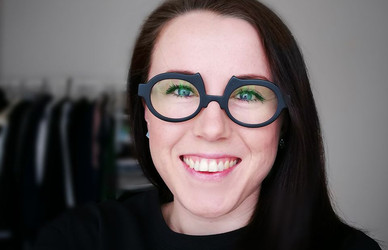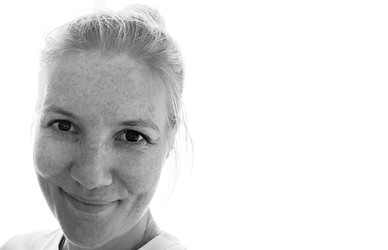Mimicking the mind of a child
- Once children become absorbed in play, they don’t always need toys because there’s so much else going on. Having room to play and having the right people to play with is so much more important, explains PhD Karen Feder from Design School Kolding. – But adults don’t always get that, she adds.
Karen Feder recently defended her PhD thesis ’Child-centred Design for Play.’ Her thesis focuses on companies that design products for children.
- It is extremely valuable for a company to design the right piece of toy – right from the beginning. A toy that matches the lifestyle and interests of the child. Realising far into the development process that you came off to a wrong start can be costly. And from a sustainability point of view, getting it right will extend the life cycle of the toy.
Designers at eye-level
Karen Feder’s thesis presents a number of methods for studying the play behaviour of children that literally bring designers at eye-level with their users. Having the right perspective is crucial when designing products and experiences for children.
- Most adults don’t remember what it was like to be a child. So, I have asked the children to invite the designers to play along: Down on the floor, into the cave, out on the playground. And this is a huge wake-up call for the designers. It’s great for them to have a front row experience, and it changes their design approach dramatically, says Karen Feder, who used to work as an observation pedagogue before becoming a designer.
Her research positions children as key co-players when it comes to giving designers valuable insight. Armed with glue gun, tape and reflection cards children and designers help each other identify child personas.
A better life from the hospital bed
Although the main focus of the thesis is commercial, there are many stakeholders who can benefit from Karen Feder’s research.
- Schools and children hospital wards can apply the methods to ensure that their facilities and processes match the needs of the children. A professional team will of course focus on providing the right treatment for a child – but for a child there is a lot of other stuff going on as well, for instance being able to play and interact with other people during the treatment. Therefore we need to know and respect the perspective of the child, Karen Feder explains.
Bottoms and bold questions
Karen Feder has discussed her methods with the Danish Broadcasting Corporation’s (DR) children’s channel DR Ultra. They recognised the mindset from a survey they made about children’s needs and expectations when it comes to sex education on television.
- DR had ideas about investigating various problems and basing their programme on children’s uncertainties. But when they talked to the children, they realised that, in fact, what the children wanted was just to see some regular people without clothes on and ask a few questions about how “things work”. This resulted in the programmed Ultra Smider tøjet’ (DR Ultra Strips).
Game over – in China and America
Karen Feder did her study in a Danish context. However, tests and interviews have given her some insights into the children’s cultures of other countries, and their view on play.
- In America we asked a group of children between the ages of 7 and 9 to make a drawing of their life. But they couldn’t, they said. Because America does not have the same tradition for drawing as we do in Denmark. In America adults encourage children to write instead. In China children stop playing around the age of 6. Then teddy bears and toys are cleared from children’s rooms and are replaced by learning.
- I fight for play, because it is key for our ability to grow into creative and independent people. Designers need to understand and support play and children’s right to play, Karen Feder ends.
Unique Danish approach to play
- In Denmark we have a unique approach to play and a unique understanding of what play means to us as people – both in terms of how we build our identity, how we learn and how we interact with other people. This is why we have set up our Lab for Play and Design with The LEGO Foundation, and this is why we continue to build our knowledge in this field, says Lene Tanggaard, newly appointed rector of Design School Kolding.
In 2017, Design School Kolding, the LEGO Foundation and the LEGO Group joined forces to establish the world’s first, exclusive two-year international Master’s Degree programme within Design for Play. The programme produces a new generation of highly specialised designers who can help companies and organisations achieve their aim of supporting customers, users and employees in creating a world that supports children and people in general in becoming creative, engaged, lifelong learners.





